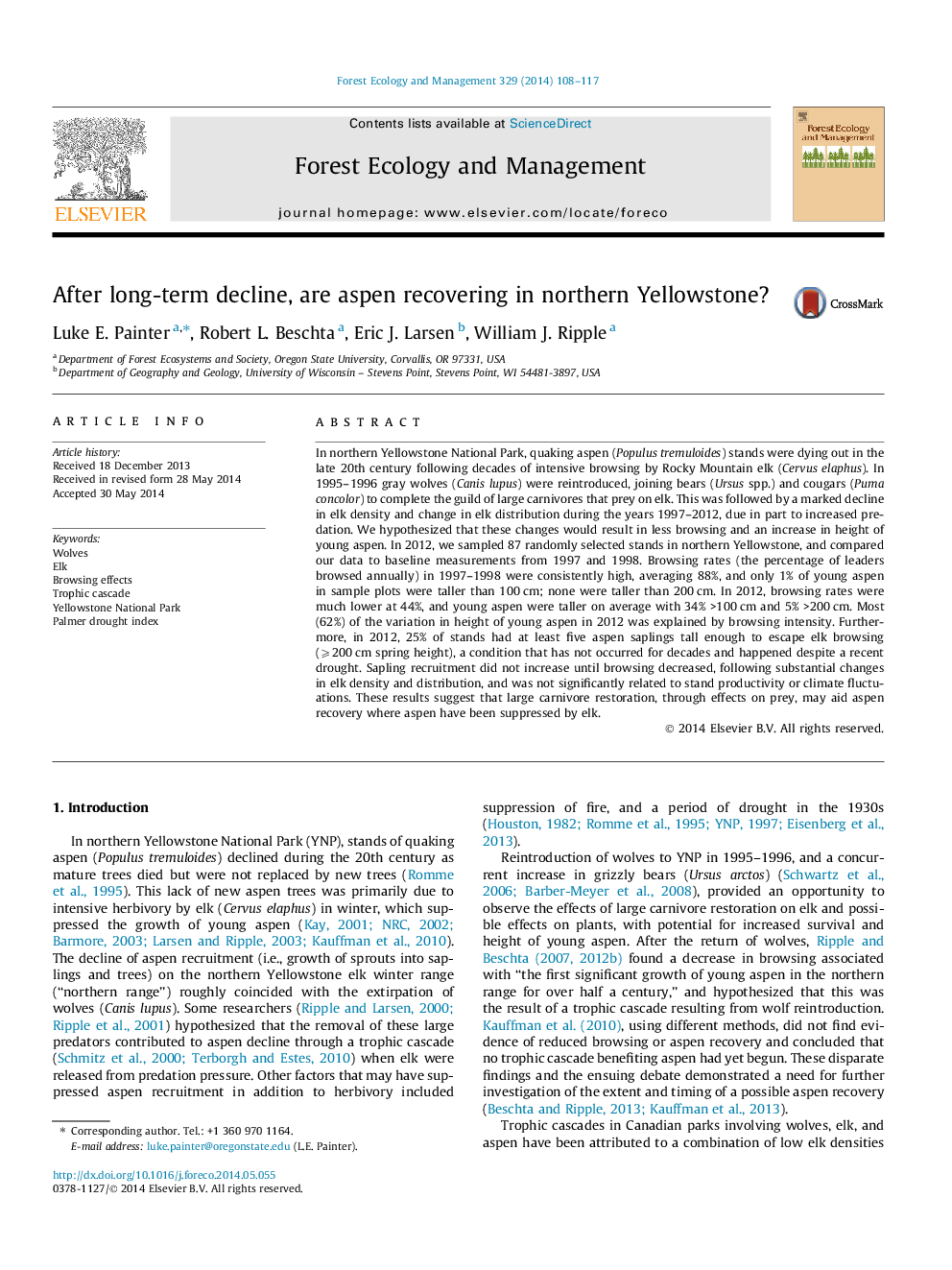| کد مقاله | کد نشریه | سال انتشار | مقاله انگلیسی | نسخه تمام متن |
|---|---|---|---|---|
| 6543411 | 159190 | 2014 | 10 صفحه PDF | دانلود رایگان |
عنوان انگلیسی مقاله ISI
After long-term decline, are aspen recovering in northern Yellowstone?
ترجمه فارسی عنوان
پس از سقوط بلند مدت، آفتاب در شمال یلوستون بهبود می یابد؟
دانلود مقاله + سفارش ترجمه
دانلود مقاله ISI انگلیسی
رایگان برای ایرانیان
کلمات کلیدی
گرگ ها، ملکه، اثرات مرور، آبشار طوفان پارک ملی یلوستون، شاخص خشکسالی پالمر،
موضوعات مرتبط
علوم زیستی و بیوفناوری
علوم کشاورزی و بیولوژیک
بوم شناسی، تکامل، رفتار و سامانه شناسی
چکیده انگلیسی
In northern Yellowstone National Park, quaking aspen (Populus tremuloides) stands were dying out in the late 20th century following decades of intensive browsing by Rocky Mountain elk (Cervus elaphus). In 1995-1996 gray wolves (Canis lupus) were reintroduced, joining bears (Ursus spp.) and cougars (Puma concolor) to complete the guild of large carnivores that prey on elk. This was followed by a marked decline in elk density and change in elk distribution during the years 1997-2012, due in part to increased predation. We hypothesized that these changes would result in less browsing and an increase in height of young aspen. In 2012, we sampled 87 randomly selected stands in northern Yellowstone, and compared our data to baseline measurements from 1997 and 1998. Browsing rates (the percentage of leaders browsed annually) in 1997-1998 were consistently high, averaging 88%, and only 1% of young aspen in sample plots were taller than 100 cm; none were taller than 200 cm. In 2012, browsing rates were much lower at 44%, and young aspen were taller on average with 34% >100 cm and 5% >200 cm. Most (62%) of the variation in height of young aspen in 2012 was explained by browsing intensity. Furthermore, in 2012, 25% of stands had at least five aspen saplings tall enough to escape elk browsing (⩾200 cm spring height), a condition that has not occurred for decades and happened despite a recent drought. Sapling recruitment did not increase until browsing decreased, following substantial changes in elk density and distribution, and was not significantly related to stand productivity or climate fluctuations. These results suggest that large carnivore restoration, through effects on prey, may aid aspen recovery where aspen have been suppressed by elk.
ناشر
Database: Elsevier - ScienceDirect (ساینس دایرکت)
Journal: Forest Ecology and Management - Volume 329, 1 October 2014, Pages 108-117
Journal: Forest Ecology and Management - Volume 329, 1 October 2014, Pages 108-117
نویسندگان
Luke E. Painter, Robert L. Beschta, Eric J. Larsen, William J. Ripple,
